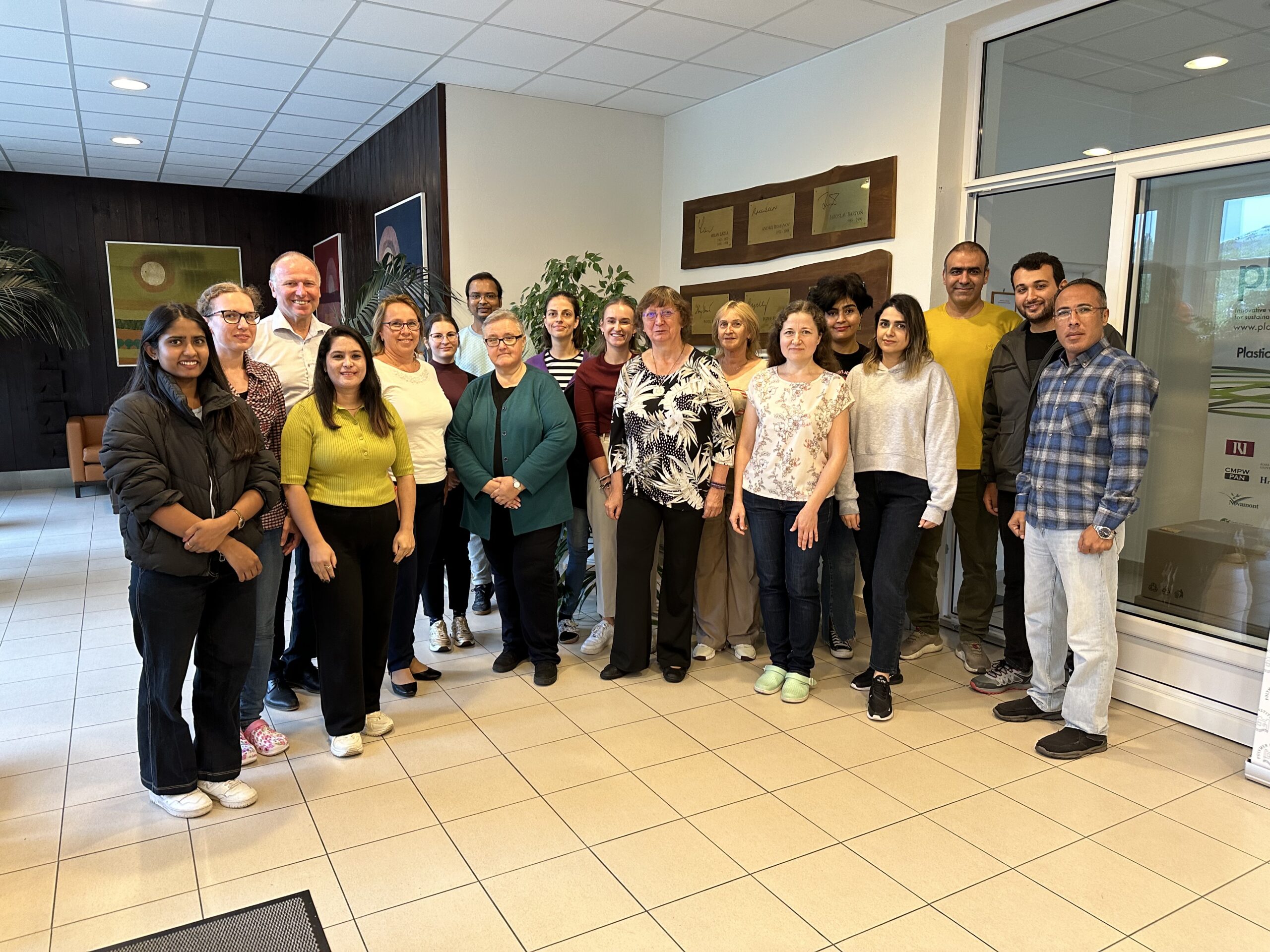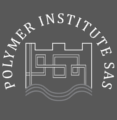Department for Biomaterials Research

Welcome to the Department for biomaterials research.
These webpages will guide you through the main information on our staff, projects, principal equipment, facilities and publications.
Our main activities in several research areas are:
Immobilization of bioactive substances
Immune protection of transplanted cells in diabetes treatment
For a number of years we have been dealing with utilization of polymeric materials in the diabetes treatment by transplanted pancreatic islets. Transplanted islets are protected from the attack of the immune system by encapsulation in the polymeric semipermeable membrane. We are proud of being the partners of The Chicago Diabetes Project (www.chicagodiabetesproject.org) led by Prof. Jose Oberholzer. In a close cooperation with laboratories in USA and Europe we work on development of microcapsules prepared by polyelectrolyte complexation and the process of encapsulation with the aim of pre-clinical testing. These microcapsules function, in various extend, in rodent animal models and, importantly, do not exhibit a significant immune response after implantation to peritoneal cavity of baboons used as a non-human primate model. Recently we proposed several principles for improving microcapsules to avoid stimulation of the human immune system tested in the human whole blood model in the cooperation with NTNU Trondheim. Apart from recipes and process for microcapsule formation, we focus on physico-chemical characterization of microcapsules and serve as the testing laboratory for a number of cooperating laboratories. We are also in a close contact with those affected by diabetes (patients, their relatives, diabetologists) and we communicate about our work via the non-profit foundation Cukrovka n.f. (www.cukrovkanf.sk).

Polyelectrolyte complex-based microcapsules with encapsulated islets are transplanted to diabetic animal models, including the pre-clinical primate model
Immobilization of cells and enzymes in biotechnology
Our experience with the immobilization of bioactive compounds is utilized in the cooperation with the Institute of Chemistry SAS for biotechnological applications. In the last years we successfully immobilized whole cells (Nocardia tartaricans), enzymes (glucose oxidase) and other types of biocatalysts (Escherichia coli over-expressing Baeyer–Villiger monooxygenases). Encapsulation generally results in enhanced stability and activity of immobilized biocatalysts.
Poly(2-oxazolines): polymeric materials for biomedical applications
Poly(2-alkyl-2-oxazoline)s belong to a unique class of polymers with exceptional properties for their use in various biomedical applications. Current research and implementation reach the first clinical trials. Therefore it is of high importance to recognize behavior of this class of polymers inside a living organism as well as to control the circulation and therapeutic effects. In this context, our effort is mainly focused on the synthesis of functional polymers based on 2-oxazolines and polymers with complex architecture and on the study of their interactions with various cell lines.
Functional polymers are an irreplaceable part in the preparation of conjugates with biomolecules. Such constructs may be applied, for example, as drug delivery systems or vaccines with long-term effect against different types of diseases. We have recently focused on the preparation of poly(2-oxazoline)s containing double bond as an end group or in the side chain, which can be used for the covalent attachment of therapeutic peptides through thiol-ene click reaction. Poly(2-isopropenyl-2-oxazoline) prepared by radical polymerization represents a special type of polymer for biomedical application that is studied at our department. Recently, we dealt with the preparation of this type of polymers using atom transfer radical polymerization (ATRP), which should enable the preparation of polymers with controlled molar mass and narrow molar masses distributions. Free 2-oxazoline groups in the side chain can be used for the introduction of different structural motifs and for the preparation of conjugates with various drugs.
Amphiphilic copolymers represent materials able to self-assemble in aqueous solutions that can be used for drug encapsulation in the micellar nanoparticles. For the formation of nanoparticles, we employ two types of amphiphilic copolymers. In the first case, block copolymers are prepared by the sequential copolymerization of hydrophilic and hydrophobic monomers. In the second case, gradient copolymers are prepared by the one-pot cationic copolymerization of 2-oxazolines. We have demonstrated very high colloidal stability of nanoparticles on the basis of gradient copolymers. We used these systems for encapsulation of curcumin as the efficient natural drug.
Stimuli-responsive polymers are able to respond to various physical and chemical stimuli by a sharp change of their properties, such as solubility or swelling. Such responsive polymers can be used as “smart” drug carriers or biosensors. In our lab, we focus on the preparation of copolymers based on poly(2-oxazoline)s able to self-assemble or aggregate upon the temperature change. Further, we study the effect of the ultrasound, as a non-invasive external stimulus, on the drug release from poly(2-oxazoline) micelles.

Spontaneous and ultrasound-triggered release profiles of dexamethasone from poly(2-oxazoline)-based micelles
(Sci Rep 2018, 8, 9893)
Hydrogels represent materials frequently used in pharmaceutic applications, in tissue engineering and 3D cell cultivations. Our work is focused on the preparation of poly(2-oxazoline) hydrogels via different routes. We prepare covalently crosslinked hydrogels employing various bis(2-oxazoline)s crosslinkers, as well as hydrogels crosslinked by UV-light or ß-radiation. Our goal is to prepare materials applicable in biomedicine, by finely tuning the parameters, such as type and concentration of a crosslinker, polymer solid content and reaction times. We study the swelling, mechanical properties, morphology and biocompatibility of prepared hydrogels
Biocompatible polymer surfaces prepared in our laboratoriesarebased on zwitterionic and 2-oxazoline polymers. They are used for preparation of biocompatible surfaces with significantly reduced non-specific binding of proteins. Several principles have been employed for modification of supports (glass, metal, silica, plastics) involving activation by plasma, electrochemically, (photo)chemically, or using beta irradiation. The aim of our study is the permanent surface modification of implantable materials to avoid an uncontrolled response of a host organism and to extend functionality of the implant.
Polymeric systems for cancer immunotherapy
Despite the considerable progress in the field of cancer treatment and the implementation of various therapeutic approaches, cancer remains one of the main causes of mortality worldwide In recent years, we experience the comeback of natural ways in cancer treatment including the concept of immunotherapy. Modulation of the immune system can induce strong anticancer immune responses, break existing tolerance, promote tumor regression, and induce immunological memory that can help prevent tumor recurrence. Polymers based on 2-oxazolines belong to a family of biocompatible polymers offering the preparation of a wide range of nano-carriers. Some types of these polymers have proven immunomodulatory properties and have been used in the preparation of vaccines. Therefore, we focus on the preparation of complex polymer systems, which, due to their natural structure, will stimulate the immune cells (in our case macrophages) and will serve as polymer carriers for targeted drug delivery. Thus, these polymer carriers may provide a combined immunotherapy in the cancer treatment by synergic effect of immuno- and chemotherapy in one system.

Worm-like nanoparticles by self-assembly of gradient copolymers based on 2-oxazolines visualized by transmission electron microscopy
Biocompatibility and immunocompatibility of polymers and polymeric materials
The development of biomaterials for biomedical applications is associated with characterization of their cytotoxicity and immunotoxicity, and also with exploring and understanding of their interactions with the living tissues. Therefore, the cell culture laboratory was established to provide multiple molecular-biological and immunological characterizations (eg, viability tests, cell and proteins adhesion on the surface, ELISA tests and others). The materials are characterized from the point of the bio- and immune-compatibility and the changes of protein expressions following specific signal molecules such as cytokines and growth factors. This knowledge obtained from in vitro analysis enables us to select suitable types of materials for testing in vivo in the animal models, in collaboration with the CellTrans, Inc. in Chicago. The relationship between in vitro and in vivo characterization of developed biomaterials enables us to correlate the performance of materials under the in vivo environment with their physico-chemical properties.
Modification and characterization of polysaccharides
Polysaccharides have been playing an important role in the field of biomaterials science. Over the past decade, there is an increased interest in modification, characterization, and application of polysaccharides in this field. In this viewpoint, we work on the introduction of cationic, anionic and zwitterionic moieties into the polysaccharide backbone focusing on reproducibility of the chemical reactions and properties of final products. Additionally, we work on synthesis of polysaccharides with clickable moieties serving as precursors used in the design of biomaterials. Here, the manufacturing or post-modification of hydrogel biomaterials using bioorthogonal click chemistry is one of the areas we explore. The bioorthogonal click chemistry, with controlled kinetics, generates the biomaterials under mild reaction conditions and affords enormous diversity and complexity. Hence, the bioorthogonal chemistry is seen as an ideal method to be applied for manufacturing or post-modification of hydrogel biomaterials such as, for example, the cell-laden hydrogels and microcapsules.
Radical polymerization in aqueous solutions
Radical polymerization of water-soluble monomers in aqueous phase is highly specific due to strong interactions governing the polymerization kinetics and mechanism. In cooperation with the universities in Goettingen, Kingston, and with the BASF SE in Ludwigshafen, we study different homopolymerization and copolymerization systems of non-ionized and ionized water-soluble monomers including acrylic and methacrylic acid, acrylamide, N-vinylformamide, N-vinylpyrrolidone, zwitterions, cationically charged monomers, and others. This new knowledge, including the solvent effects involved in radical polymerization in aqueous and organic solutions, has been gained thanks to the pulsed-laser initiated polymerizations providing the individual rate coefficients. These rate coefficients enabled modeling of polymerization processes and polymer molar mass distributions.

Pulsed-laser polymerizations: from individual rate coefficients to understanding of radical polymerization mechanism and kinetics up to its modeling
In case of any questions please request the information sending the email to igor.lacik@savba.sk

 contacts
contacts
